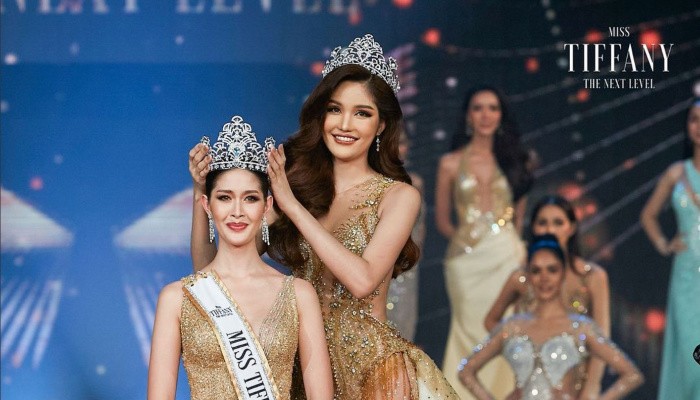What Is A Ladyboy? It’s a question that sparks curiosity, inviting exploration into the diverse world of gender identity and cultural understanding, especially within Asian communities. WHAT.EDU.VN aims to shed light on this term, offering insights and fostering a respectful dialogue while providing accurate information and dispelling misconceptions. Delve into the nuances of terminology, cultural acceptance, and societal perspectives on ladyboys, transgender women, and gender diversity.
1. Understanding the Term: What Is A Ladyboy?
The term “ladyboy” is often used to refer to transgender women in Asia, particularly in Thailand, the Philippines, and other Southeast Asian countries. While the term is widely used, it’s important to approach it with sensitivity and awareness of its potential to be perceived as derogatory.
- Origin and Usage: The word “ladyboy” is an English translation of the Thai word “kathoey,” which traditionally refers to transgender women or effeminate gay men. In Thailand, the term is often used in everyday conversation and may not carry the same negative connotations as it does in Western cultures.
- Cultural Context: Understanding the cultural context is crucial when discussing ladyboys. In some Asian societies, transgender individuals have a more visible and accepted presence than in Western countries. However, this doesn’t mean that discrimination and prejudice don’t exist.
- Sensitivity: While “ladyboy” is commonly used in some Asian countries, it’s essential to be mindful of individual preferences. Many transgender women prefer to be identified as women, regardless of their country of origin. Using the term “transgender woman” is generally considered more respectful.
2. Exploring the Cultural Landscape of Ladyboys
The cultural landscape surrounding ladyboys varies significantly across different Asian countries. While Thailand is often seen as a haven for transgender individuals, other nations have their own unique traditions and societal attitudes.
- Thailand: The Land of Ladyboys: Thailand has a long history of acceptance and tolerance towards ladyboys. They are visible in various aspects of Thai society, including entertainment, fashion, and business.
- The Philippines: Bakla and Bayot: In the Philippines, the terms “bakla” and “bayot” are used to describe transgender women and effeminate gay men. Like Thailand, the Philippines has a relatively tolerant attitude towards LGBTQ+ individuals, but challenges still exist.
- Other Asian Countries: Other Asian countries, such as Malaysia, Singapore, and Indonesia, have varying degrees of acceptance towards ladyboys. In some cases, transgender individuals face legal and social discrimination.
3. Ladyboys in Thailand: A Closer Look
Thailand is often referred to as the “Land of Ladyboys” due to its relatively large population of transgender women and its relatively tolerant attitude towards them.
- Historical Context: The history of ladyboys in Thailand dates back centuries. Thai kings often had ladyboy partners and lovers, which influenced Thai culture and tradition.
- Social Acceptance: While Thailand is generally accepting of ladyboys, discrimination still exists. Transgender individuals may face challenges in accessing employment, healthcare, and education.
- Economic Opportunities: Many ladyboys in Thailand find employment in the entertainment industry, working as dancers, performers, and models. Others work in various professions, including teaching, healthcare, and business.
4. The Term “Kathoey”: Understanding Its Meaning
The Thai term “kathoey” is often used interchangeably with “ladyboy.” However, it’s important to understand the nuances of the term and its cultural significance.
- Definition: “Kathoey” is a Thai word that refers to transgender women or effeminate gay men. The term encompasses a range of gender identities and expressions.
- Cultural Significance: In Thai culture, “kathoey” is a recognized gender category that exists alongside male and female. Kathoeys are often seen as having a unique role to play in society.
- Evolving Usage: The usage of the term “kathoey” is evolving. Some transgender women prefer to be identified as women, while others embrace the term “kathoey” as part of their cultural identity.
5. Why Thailand Has a Large Ladyboy Population
Several factors contribute to Thailand’s large ladyboy population and its relatively tolerant attitude towards transgender individuals.
- Buddhist Influence: Thailand is a predominantly Buddhist country, and Buddhism is often seen as a religion that promotes tolerance and acceptance of diversity.
- Cultural Acceptance: Thai culture has a long history of accepting gender diversity. Ladyboys have been a part of Thai society for centuries, and their presence is often seen as normal.
- Economic Opportunities: Thailand’s tourism industry provides economic opportunities for ladyboys. Many work in the entertainment industry, catering to tourists who are interested in seeing ladyboy shows and performances.
6. Ladyboys in the Philippines: Bakla and Bayot
The Philippines, like Thailand, has a relatively tolerant attitude towards LGBTQ+ individuals, including ladyboys. The terms “bakla” and “bayot” are used to describe transgender women and effeminate gay men in the Philippines.
- Definition: “Bakla” and “bayot” are Filipino terms that refer to transgender women or effeminate gay men. These terms are similar to the Thai term “kathoey.”
- Social Acceptance: While the Philippines is generally accepting of bakla and bayot, discrimination still exists. Transgender individuals may face challenges in accessing employment, healthcare, and education.
- Cultural Influence: Bakla and bayot have a visible presence in Filipino society, appearing in television shows, movies, and beauty pageants.
7. Ladyboys in Other Asian Countries
While Thailand and the Philippines are often seen as the most tolerant countries for ladyboys, other Asian nations also have their own unique traditions and societal attitudes.
- Malaysia: Malaysia has a more conservative attitude towards LGBTQ+ individuals than Thailand and the Philippines. Transgender individuals may face legal and social discrimination in Malaysia.
- Singapore: Singapore has a mixed attitude towards LGBTQ+ individuals. While same-sex sexual activity is illegal, there is a growing movement for LGBTQ+ rights.
- Indonesia: Indonesia has a diverse population and varying attitudes towards LGBTQ+ individuals. In some parts of Indonesia, transgender individuals are accepted, while in others, they face discrimination.
8. The Evolution of the Term “Ladyboy”
The term “ladyboy” has evolved over time, and its usage is now seen as controversial by some.
- Historical Usage: The term “ladyboy” was originally used as a neutral term to refer to transgender women in Asia.
- Negative Connotations: Over time, the term “ladyboy” has acquired negative connotations, particularly in Western cultures. It is often associated with the sex industry and can be seen as disrespectful.
- Preferred Terminology: Many transgender women prefer to be identified as women, regardless of their country of origin. Using the term “transgender woman” is generally considered more respectful.
9. Why My Ladyboy Date Uses the Term “Ladyboy”
My Ladyboy Date is a dating site that caters to transgender women in Asia. The site uses the term “ladyboy” because it is a widely recognized term in the Asian market.
- Market Recognition: The term “ladyboy” is widely recognized in the Asian market, and using it helps the site reach its target audience.
- Community Building: The site aims to create a community for transgender women in Asia, and using the term “ladyboy” helps to foster a sense of belonging.
- Education and Awareness: The site also aims to educate and raise awareness about transgender issues, and using the term “ladyboy” provides an opportunity to discuss the complexities of gender identity and cultural acceptance.
10. Meeting and Dating Ladyboys: What to Expect
Meeting and dating ladyboys can be a rewarding experience, but it’s important to be respectful and understanding.
- Cultural Differences: Be aware of cultural differences. What is considered acceptable in one culture may not be acceptable in another.
- Communication: Communicate openly and honestly. Ask questions and be willing to learn about your date’s experiences and perspectives.
- Respect: Treat your date with respect. Recognize their gender identity and use appropriate pronouns.
11. Common Misconceptions About Ladyboys
There are many misconceptions about ladyboys. It’s important to dispel these myths and promote understanding and acceptance.
- All ladyboys are sex workers: This is a harmful stereotype. While some ladyboys work in the sex industry, many have other professions.
- Ladyboys are just men in dresses: This is a disrespectful and inaccurate statement. Ladyboys are women who have a different gender identity than the one they were assigned at birth.
- Ladyboys are confused about their gender: This is also inaccurate. Ladyboys are clear about their gender identity.
12. The Importance of Respectful Language
Using respectful language is crucial when discussing ladyboys and transgender issues.
- Use “transgender woman” instead of “ladyboy”: While “ladyboy” may be acceptable in some Asian cultures, it’s generally considered more respectful to use the term “transgender woman.”
- Use correct pronouns: Ask your date what pronouns they prefer and use them accordingly.
- Avoid offensive language: Avoid using derogatory terms or making disrespectful comments.
13. Transgender Rights and Advocacy
Transgender rights are human rights. Advocacy and activism are essential to ensure that transgender individuals are treated with dignity and respect.
- Support LGBTQ+ organizations: Support organizations that advocate for transgender rights.
- Educate yourself and others: Learn about transgender issues and share your knowledge with others.
- Speak out against discrimination: Challenge discrimination and prejudice whenever you see it.
14. Ladyboys in the Media: Positive and Negative Representations
Ladyboys have been represented in the media in both positive and negative ways.
- Positive Representations: Some movies and television shows have portrayed ladyboys as strong, independent women.
- Negative Representations: Other media portrayals have been stereotypical and disrespectful.
- The Importance of Accurate Representation: It’s important for the media to portray ladyboys accurately and respectfully.
15. The Role of Online Dating in Connecting Ladyboys
Online dating sites like My Ladyboy Date can play a valuable role in connecting ladyboys with potential partners.
- Creating a Safe Space: These sites can provide a safe and supportive environment for transgender women to meet and connect with others.
- Expanding Options: Online dating can expand dating options for ladyboys who may have limited opportunities in their local communities.
- Building Community: These sites can also help to build a sense of community among transgender women.
16. Ladyboys Around the World: Global Perspectives
While the term “ladyboy” is primarily associated with Asia, transgender women exist around the world.
- Transgender Women in Western Countries: In Western countries, transgender women are often referred to as “transgender women” or “trans women.”
- Cultural Differences: Cultural attitudes towards transgender individuals vary significantly around the world.
- The Importance of Global Solidarity: It’s important to show solidarity with transgender individuals around the world and support their rights.
17. Addressing Discrimination and Prejudice
Discrimination and prejudice against ladyboys and transgender individuals are still prevalent in many parts of the world.
- Education: Education is key to combating discrimination.
- Legislation: Laws that protect transgender rights are essential.
- Social Support: Providing social support for transgender individuals can help them to overcome discrimination and prejudice.
18. The Importance of Self-Acceptance
Self-acceptance is crucial for ladyboys and transgender individuals.
- Embrace Your Identity: Embrace your gender identity and be proud of who you are.
- Seek Support: Seek support from friends, family, and community organizations.
- Practice Self-Care: Take care of your physical and mental health.
19. Family and Community Support
Family and community support can make a significant difference in the lives of ladyboys and transgender individuals.
- Acceptance: Accept your loved one for who they are.
- Love and Support: Provide love and support.
- Advocacy: Advocate for their rights.
20. Resources for Ladyboys and Transgender Individuals
There are many resources available for ladyboys and transgender individuals.
- LGBTQ+ Organizations: LGBTQ+ organizations can provide support, advocacy, and resources.
- Online Forums: Online forums can provide a sense of community and support.
- Mental Health Professionals: Mental health professionals can provide counseling and therapy.
21. Navigating the Legal Landscape
The legal landscape for transgender individuals varies significantly around the world.
- Name and Gender Changes: Some countries allow transgender individuals to legally change their name and gender.
- Discrimination Protection: Some countries have laws that protect transgender individuals from discrimination.
- Marriage Equality: Some countries allow same-sex marriage, which provides legal recognition for transgender individuals in same-sex relationships.
22. Accessing Healthcare
Accessing healthcare can be a challenge for ladyboys and transgender individuals.
- Hormone Therapy: Hormone therapy can help transgender women to develop feminine characteristics.
- Gender Affirming Surgery: Gender affirming surgery can help transgender women to align their physical appearance with their gender identity.
- Discrimination in Healthcare: Transgender individuals may face discrimination in healthcare settings.
23. Ladyboys and the Sex Industry: A Complex Issue
The relationship between ladyboys and the sex industry is complex and multifaceted.
- Economic Opportunities: The sex industry can provide economic opportunities for ladyboys who may have limited options in other fields.
- Exploitation: Ladyboys in the sex industry may be vulnerable to exploitation and abuse.
- Decriminalization: Some argue that decriminalizing sex work would help to protect ladyboys in the sex industry.
24. The Future of Ladyboys and Transgender Rights
The future of ladyboys and transgender rights is uncertain, but there is reason for optimism.
- Growing Awareness: There is growing awareness of transgender issues around the world.
- Increasing Acceptance: There is increasing acceptance of transgender individuals in some parts of the world.
- Continued Advocacy: Continued advocacy and activism are essential to ensure that transgender rights are protected and advanced.
25. Understanding Sexual Orientation
Understanding sexual orientation is key in discussions about ladyboys and transgender individuals.
- Sexual Orientation vs Gender Identity: Sexual orientation refers to who someone is attracted to, while gender identity refers to someone’s internal sense of being male, female, or another gender.
- Ladyboys and Sexual Orientation: Ladyboys can be straight, gay, bisexual, or any other sexual orientation. Their gender identity does not dictate their sexual orientation.
- Respecting Sexual Orientation: It’s important to respect the sexual orientation of ladyboys and transgender individuals.
26. Hotspots Where Ladyboys Can Be Found
There are several hotspots where ladyboys can be found, primarily in Asia.
- Ladyboy Bars/Gay Bars: These establishments often cater to ladyboys and the LGBTQ+ community.
- Ladyboy Cabaret Shows: These shows showcase the talents of ladyboy performers.
- Ladyboy Beauty Pageants: These pageants celebrate the beauty and talent of ladyboys.
- Red Light Districts: In some countries, ladyboys can be found in red light districts, although it’s important to approach this with sensitivity and awareness of potential exploitation.
- Dating Sites: Online dating sites such as MyLadyboyDate.com can connect ladyboys with potential partners.
27. Stereotypes of Asian Ladyboys
It’s crucial to address stereotypes surrounding Asian ladyboys and promote understanding and respect.
- Bar Girls in Thailand: The stereotype of ladyboys being bar girls in Thailand perpetuates harmful generalizations and ignores the diversity of experiences within the ladyboy community.
- Focus on Physical Appearance: The media often focuses on the physical appearance of ladyboys, reducing them to objects of fascination rather than recognizing their individuality and humanity.
- Perpetuation of Misinformation: Stereotypes contribute to misinformation about ladyboys and their experiences, hindering progress toward acceptance and equality.
28. Safe Spaces for Dating Ladyboys
Creating safe spaces for dating ladyboys is crucial for ensuring respectful and fulfilling relationships.
- Online Dating Platforms: Online dating platforms designed for transgender individuals can provide a safe and supportive environment for connecting with potential partners.
- Community Events: Community events and gatherings organized by LGBTQ+ groups can offer opportunities for meeting like-minded individuals and forming meaningful connections.
- Respectful Communication: Open and respectful communication is essential in any relationship, particularly when dating someone from a marginalized community.
29. Key Considerations When Dating Asian Ladyboys
Dating Asian ladyboys involves understanding cultural nuances and respecting individual preferences.
- Cultural Differences: Be aware of cultural differences and avoid making assumptions based on stereotypes.
- Communication: Communicate openly and honestly about expectations and boundaries.
- Respect: Treat your partner with respect and recognize their gender identity.
30. Importance of Education and Awareness
Education and awareness are essential for fostering understanding and acceptance of ladyboys and transgender individuals.
- Promoting Accurate Information: Education helps to dispel misinformation and stereotypes surrounding ladyboys and transgender individuals.
- Encouraging Empathy: Awareness campaigns can promote empathy and understanding toward the challenges faced by ladyboys and transgender individuals.
- Advocating for Equality: Education can empower individuals to advocate for equality and justice for ladyboys and transgender individuals.
FAQ: Your Questions About Ladyboys Answered
| Question | Answer |
|---|---|
| What is a ladyboy? | Colloquial term for a transgender woman from Asia. |
| Why are there so many ladyboys in Thailand? | Thailand’s tolerant culture enables ladyboys to be more open about their gender identity. |
| Are ladyboys gay? | Gender identity and sexual orientation are distinct; ladyboys can be straight, gay, or bisexual. |
| How can I find a ladyboy? | Visit ladyboy bars, attend cabaret shows, or use dating sites like MyLadyboyDate.com. |
| How can I spot a ladyboy? | Look for common clues like a prominent Adam’s apple, deep voice, or particularly feminine demeanor. |
| What are synonyms for “ladyboy?” | Transgender woman, trans woman, Kathoey (Thailand), Bakla (Philippines); usage varies by region and sensitivity. |
| Is the term “ladyboy” offensive? | Increasingly viewed as derogatory; “transgender woman” is generally preferred, but local acceptance varies. |
| What is a “Kathoey?” | Thai term for a transgender woman or effeminate gay man. |
| Where else are ladyboys common? | Beyond Thailand, significant populations exist in the Philippines, Vietnam, Indonesia, and other Southeast Asian countries. |
| Are all ladyboys sex workers? | A harmful stereotype; many ladyboys pursue careers in various fields outside the sex industry. |






Have more questions about ladyboys? WHAT.EDU.VN offers a platform where you can ask any question and receive free answers.
Navigating the complexities surrounding the term “ladyboy” requires sensitivity, understanding, and a commitment to respectful dialogue. By dispelling misconceptions, promoting education, and fostering empathy, we can work towards creating a more inclusive and equitable society for all individuals, regardless of gender identity.
Are you seeking answers to pressing questions or navigating complex topics? Don’t hesitate to reach out to WHAT.EDU.VN, where a community of experts is ready to provide guidance and support.
For more information, visit what.edu.vn or contact us at 888 Question City Plaza, Seattle, WA 98101, United States. You can also reach us via WhatsApp at +1 (206) 555-7890.
